In 1986 or thereabouts, Louise Bourgeois noted to herself that it is ‘very very difficult to get rid of / all clothes that I do not use this year / what do they represent = / failures, rejects abandoned’. The artist had always found it hard to part with clothing, viewing her garments as anchors – often painful – to a past to which she couldn’t help but ‘hold […] tight’. A decade later, at the age of 83, Bourgeois finally managed to whittle down the contents of her wardrobe, transferring many of her clothes to her studio in Brooklyn where they formed the raw materials for several sculptures dealing with the prickly difficulties of memory and family including Cell (Clothes) (1996) and Pink Days and Blue Days (1997). She maintained a much more modest set of rails in her own flat. When she died they were still festooned with monkey fur coats, white shirts, and a number of garments, including a black tufted tuxedo, by the Austrian designer Helmut Lang, whom she had befriended at the same time as she embarked on her fabric works in the 1990s.
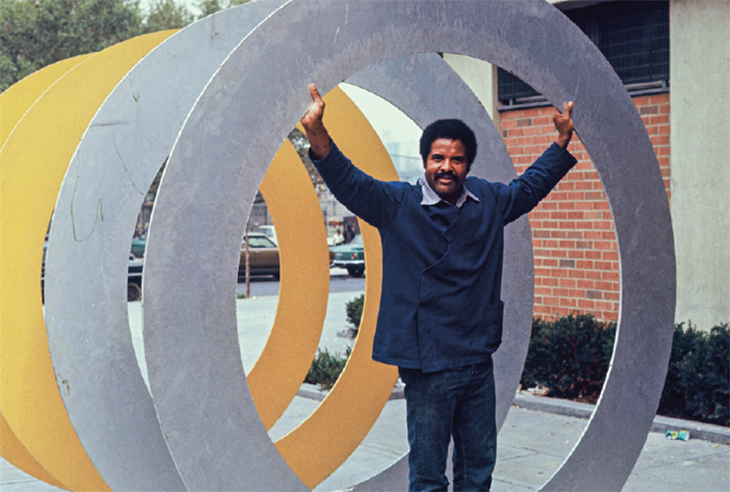
Melvin Edwards with his sculpture Double Circles (1970). Photo: courtesy the artist/Alexander Gray Associates, New York and Stephen Friedman Gallery, London
Why do we care about what artists wear? What is it about the sartorial decisions they make, or clothes they owned, that compel us? In recent years this question has felt more pressing. Just think of the V&A’s sell-out exhibition devoted to Frida Kahlo’s canny, colourful self-fashioning, or the praise – and declarations of style icon status – attached to frequently circulated images of Barbara Hepworth’s smocks, Georgia O’Keeffe’s austere tailoring, Yayoi Kusama’s polka-dot dresses or David Hockney’s natty ties. Some of these items have become merchandisable in their own right. When Hepworth was the subject of a retrospective at the Tate in 2015, Margaret Howell designed a range of chic smocks and duffel coats that could be purchased alongside.
However, as fashion critic Charlie Porter warns in his absorbing book What Artists Wear, to focus solely on the pleasures of such outfits is to flatten what the wearers were doing with them. Instead we should be asking different, deeper questions: ‘If we were to look back at the clothes artists have worn over past decades, what might we learn about the conditions in which they made their work? What might an artist’s wardrobe say about their bravery and defiance, or indeed their compliance with the culture and ideology of their society?’
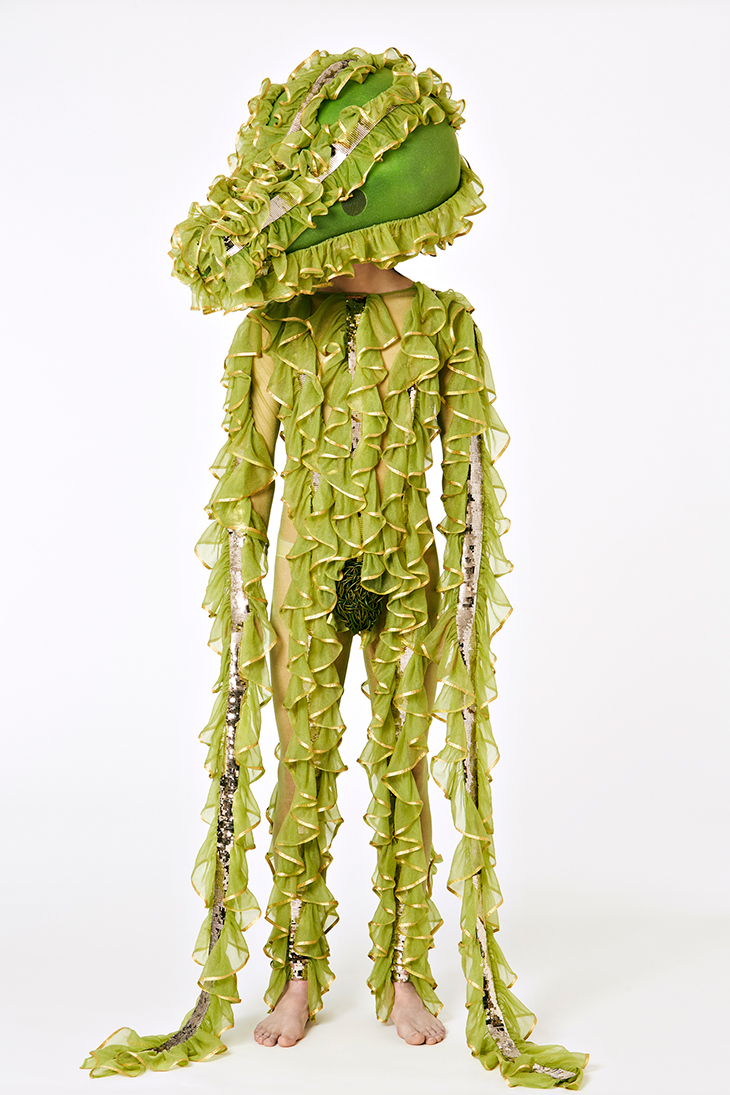
The Squash (2018), Anthea Hamilton, commissioned by Tate Britain. Photo: LOEWE
Porter has spent more than two decades writing about fashion for publications including the Financial Times, the Guardian, and the New York Times. He is also a curator, and served as a juror for the Turner Prize in 2019. Here he turns his attentions to the complex relationship between clothing and power: teasing out – through potted biographies, contemporary interviews, and digressions into topics from tailoring to tracksuits – an understanding of fashion and art that goes far beyond the merely expressive. Instead the wardrobe choices made by a range of artists over the last century yield intimate insights into their working lives and strategies of self-presentation.
The book is arranged, John Berger-style, around more than 300 photos, with Porter acting as gallery tour guide as he invites us to study particular images and explains the significance of Jean-Michel Basquiat’s understated Comme des Garçons coats or Andy Warhol’s love of mass-produced denim. Basquiat, Porter observes, developed a language of clothing that reflected his art – ‘oversized, off-kilter, chaos in control’ – and found a visual kinship in the unusual shapes and playful silhouettes of Rei Kawakubo. Warhol on the other hand embraced ‘commonality’ in all things – so of course he saw possibilities in a practical, unremarkable pair of jeans.

Jean-Michel Basquiat modelling at a Comme des Garçons show. Photo: Comme des Garçons
As the book progresses it delves deeper into the two-way traffic between art and clothing, with detours through paint-splattered crocs and aprons, elaborate outfits used by performance artists such as Lynn Hershman Leeson and Anthea Hamilton (whose mesmerising costumes for the Tate performance piece The Squash [2018], worn by 14 different performers, were created in collaboration with Spanish luxury label Loewe), and the intricate textiles work of artists including Senga Nengudi, Richard Tuttle, and Andrea Zittel. The book is at its best when it rummages through the wardrobes and works of these artists at length, hanging out in the studio of painter Nicole Eisenman or featuring exchanges with video and performance artist Martine Syms about her interest in bootleg garments and designer fakes.
At other points this meandering approach leaves the reader wanting more. Analysis of, say, the suit’s messages about male power would benefit from more depth than can be found in the few, scant lines here. However the cumulative strength of Porter’s book comes from its obvious relish for the vitality and varied possibilities of clothing, and its understanding of the tightly woven – and often tense – connections between fashion, art, and social norms. Just as they do so in life, in these pages garments ultimately figure as many things: language, tool, uniform, disguise, material, memory store, practical necessity, marker of identity, source of both assimilation and transformation. Artists, like the rest of us, have to get dressed each day. Whether they choose grubby T-shirts or tufted Helmut Lang tuxedo coats, Porter does a compelling job of explaining why we should pay attention.
What Artists Wear by Charlie Porter is published by Penguin.
Unlimited access from just $16 every 3 months
Subscribe to get unlimited and exclusive access to the top art stories, interviews and exhibition reviews.


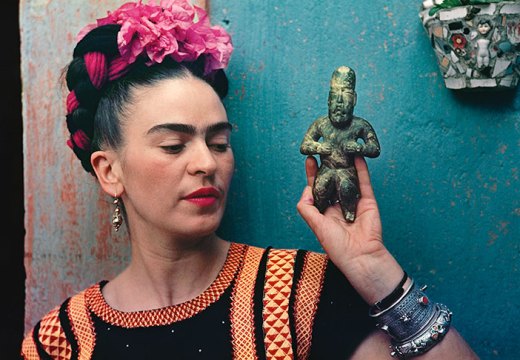
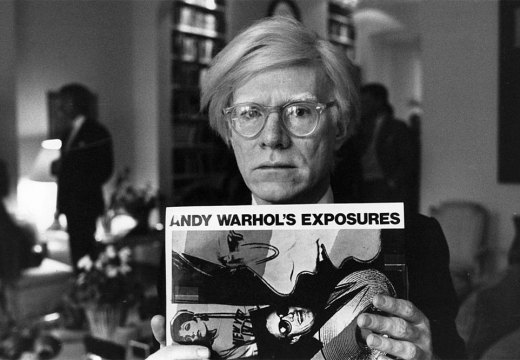
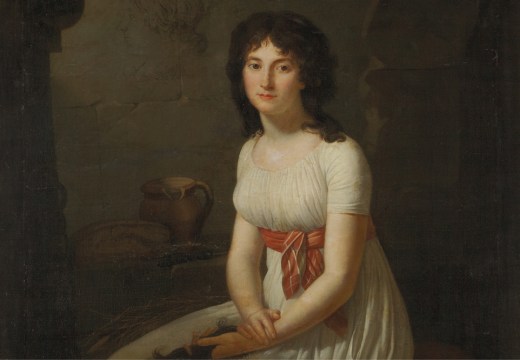









![Masterpiece [Re]discovery 2022. Photo: Ben Fisher Photography, courtesy of Masterpiece London](http://www.apollo-magazine.com/wp-content/uploads/2022/07/MPL2022_4263.jpg)
It’s time for the government of London to return to its rightful home